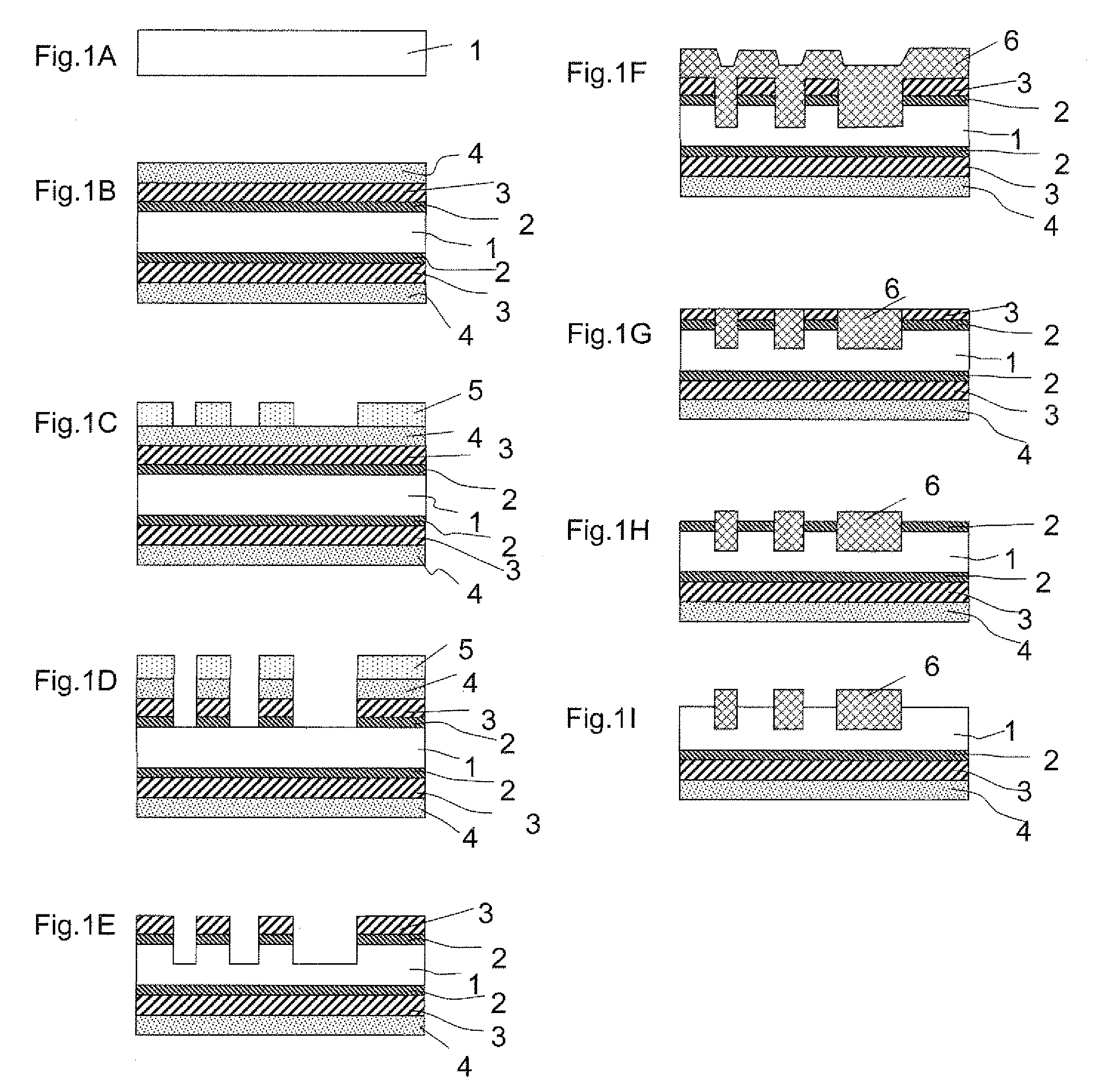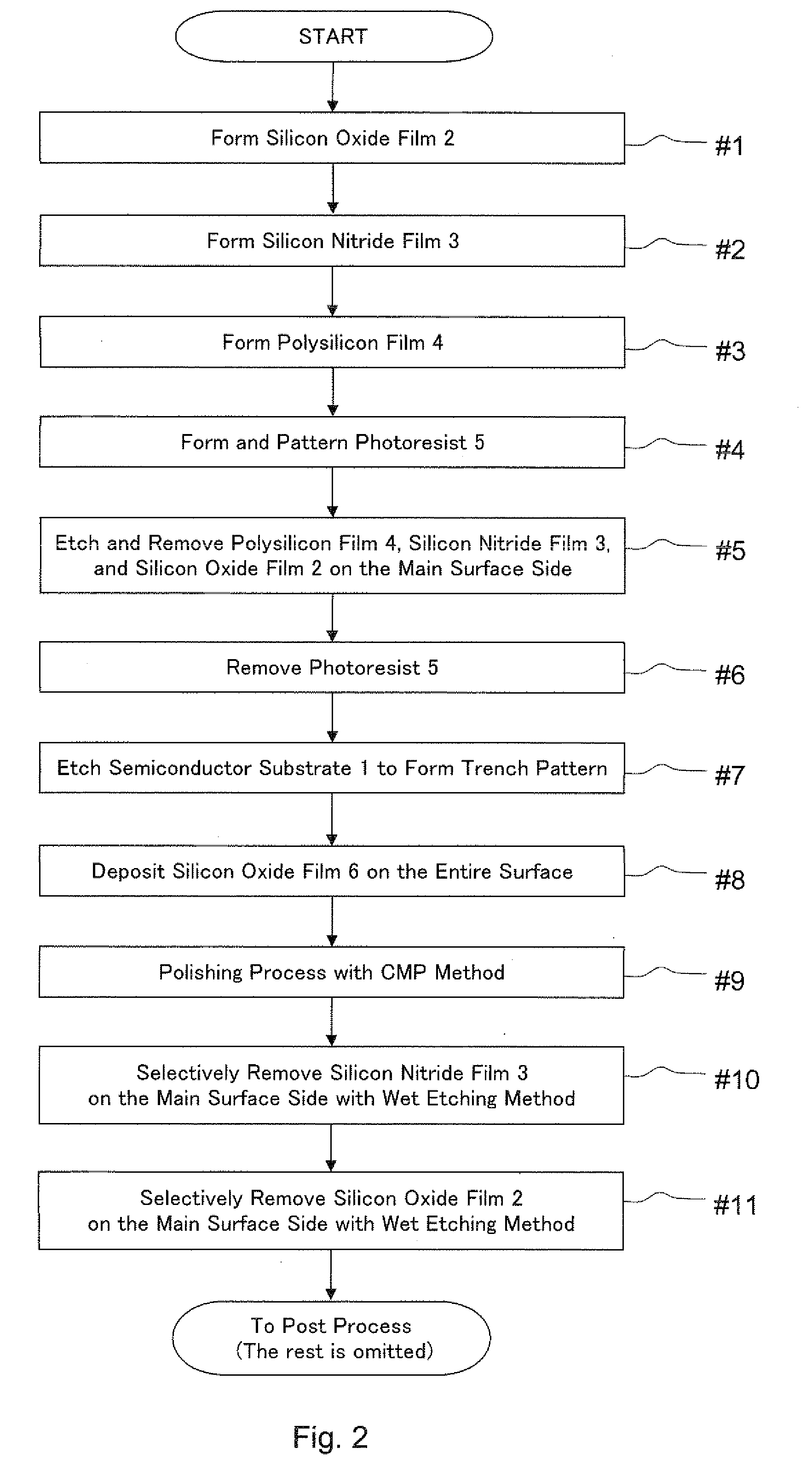Manufacturing method for semiconductor device
a manufacturing method and semiconductor technology, applied in semiconductor/solid-state device manufacturing, basic electric elements, electric devices, etc., can solve the problems of deterioration of transistor properties and properties, deterioration of quality and properties of manufactured semiconductor devices, and significant deterioration of semiconductor devices. , to achieve the effect of preventing metal diffusion, increasing the number of steps, and preventing metal diffusion into the semiconductor substra
- Summary
- Abstract
- Description
- Claims
- Application Information
AI Technical Summary
Benefits of technology
Problems solved by technology
Method used
Image
Examples
Embodiment Construction
[0042]In the following, the manufacturing method for a semiconductor device according to an embodiment of the present invention (hereinafter referred to as “method according to the present invention”) is described in reference to FIGS. 1 and 2.
[0043]FIGS. 1A to 1I are schematic cross sectional views illustrating the structure in each step when a semiconductor device is manufactured using the method according to the present invention. Each of FIG. 1A to 1I shows each steps. In addition, FIG. 2 is a flow chart illustrating the manufacturing steps using the method according to the present invention, and each step in the following description represents one step in the flow chart shown in FIG. 2.
[0044]Here, FIGS. 1A to 1I are schematic cross sectional views showing the structure, and the scale in the drawings does not necessarily correspond to the actual scale.
[0045]First, as shown in FIG. 1A, a silicon oxide film 2 is formed on a semiconductor substrate 1 in a thickness of approximatel...
PUM
| Property | Measurement | Unit |
|---|---|---|
| thickness | aaaaa | aaaaa |
| thickness | aaaaa | aaaaa |
| thickness | aaaaa | aaaaa |
Abstract
Description
Claims
Application Information
 Login to View More
Login to View More - R&D
- Intellectual Property
- Life Sciences
- Materials
- Tech Scout
- Unparalleled Data Quality
- Higher Quality Content
- 60% Fewer Hallucinations
Browse by: Latest US Patents, China's latest patents, Technical Efficacy Thesaurus, Application Domain, Technology Topic, Popular Technical Reports.
© 2025 PatSnap. All rights reserved.Legal|Privacy policy|Modern Slavery Act Transparency Statement|Sitemap|About US| Contact US: help@patsnap.com



